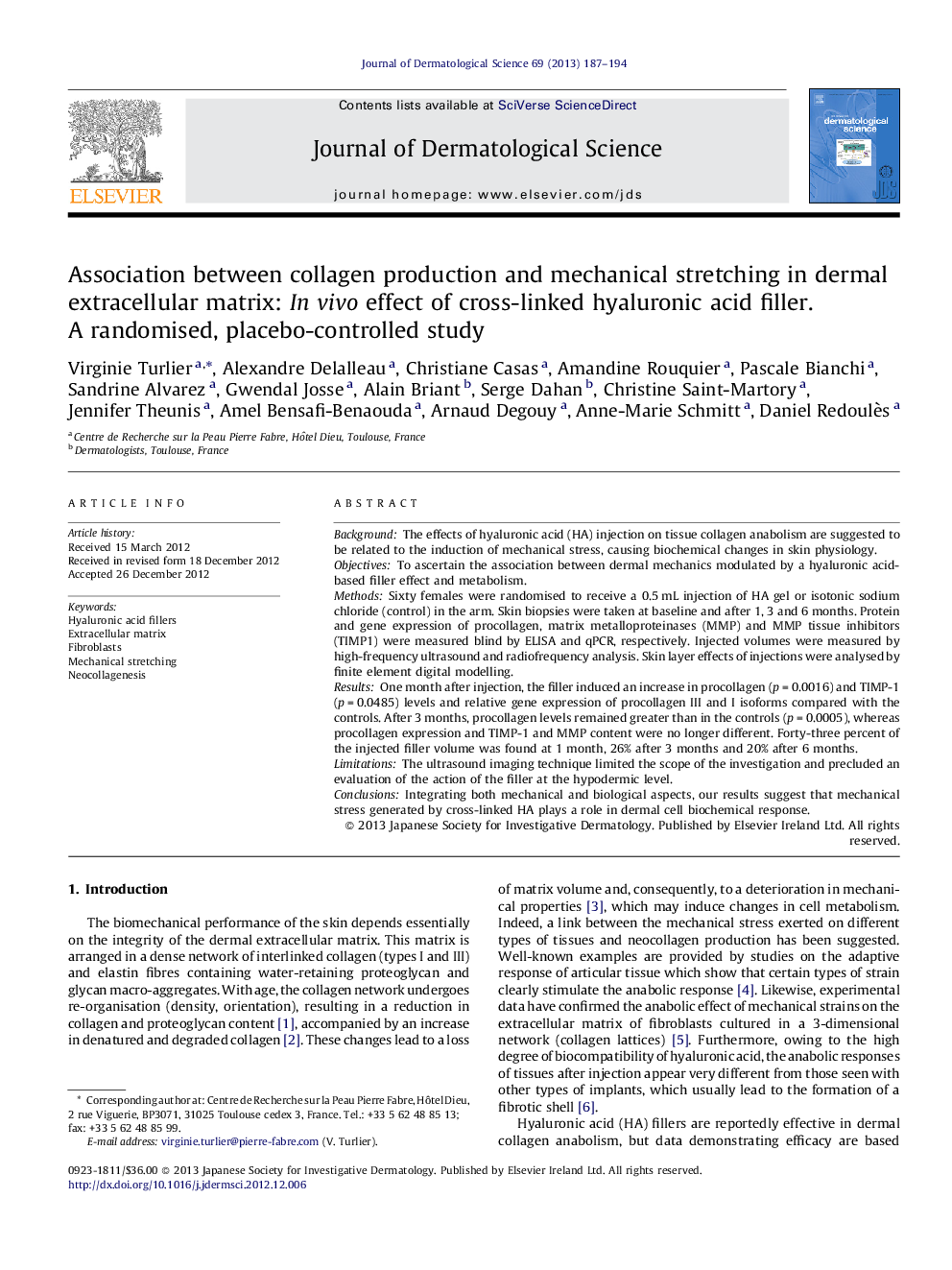| Article ID | Journal | Published Year | Pages | File Type |
|---|---|---|---|---|
| 3213121 | Journal of Dermatological Science | 2013 | 8 Pages |
BackgroundThe effects of hyaluronic acid (HA) injection on tissue collagen anabolism are suggested to be related to the induction of mechanical stress, causing biochemical changes in skin physiology.ObjectivesTo ascertain the association between dermal mechanics modulated by a hyaluronic acid-based filler effect and metabolism.MethodsSixty females were randomised to receive a 0.5 mL injection of HA gel or isotonic sodium chloride (control) in the arm. Skin biopsies were taken at baseline and after 1, 3 and 6 months. Protein and gene expression of procollagen, matrix metalloproteinases (MMP) and MMP tissue inhibitors (TIMP1) were measured blind by ELISA and qPCR, respectively. Injected volumes were measured by high-frequency ultrasound and radiofrequency analysis. Skin layer effects of injections were analysed by finite element digital modelling.ResultsOne month after injection, the filler induced an increase in procollagen (p = 0.0016) and TIMP-1 (p = 0.0485) levels and relative gene expression of procollagen III and I isoforms compared with the controls. After 3 months, procollagen levels remained greater than in the controls (p = 0.0005), whereas procollagen expression and TIMP-1 and MMP content were no longer different. Forty-three percent of the injected filler volume was found at 1 month, 26% after 3 months and 20% after 6 months.LimitationsThe ultrasound imaging technique limited the scope of the investigation and precluded an evaluation of the action of the filler at the hypodermic level.ConclusionsIntegrating both mechanical and biological aspects, our results suggest that mechanical stress generated by cross-linked HA plays a role in dermal cell biochemical response.
